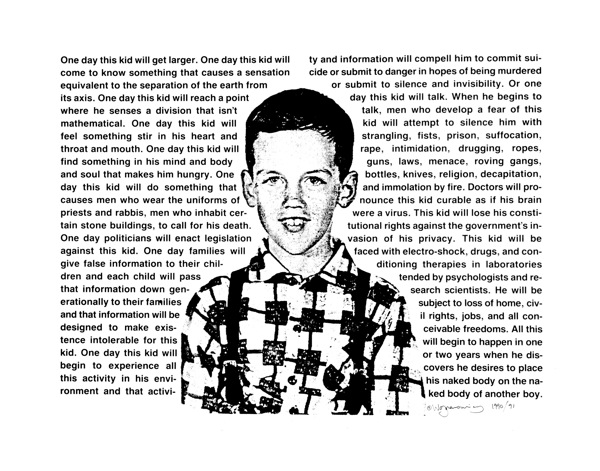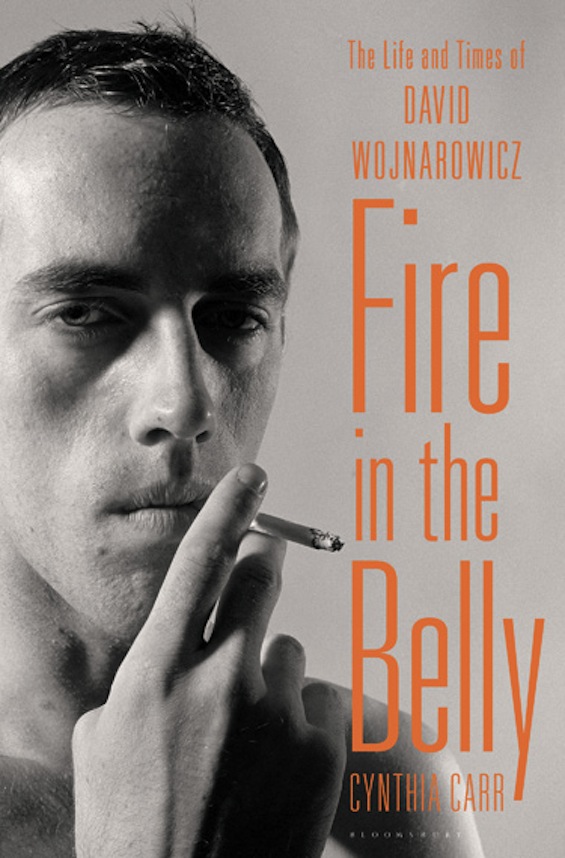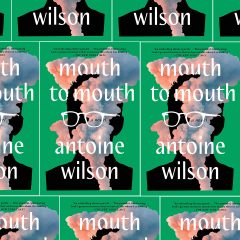By turns energizing and sad, Cynthia Carr’s book, “Fire in the Belly: The life and times of David Wojnarowicz” mirrors the exhilarating times and tetchy personality of its subject, David Wojnarowicz. The artist was a tortured soul, gifted and amazing wordsmith and artist and zealous AIDS activist. Carr, a writer for the Village Voice who covered the experimental art of the East Village in the 70s and 80s, met Wojnarowicz in 1982 and was close to him at the end of his life (he died of AIDS in 1992 at age 37).
Her book is an unabashedly sympathetic portrait of this gay-rights activist artist and a great chronicle of the times and places Wojnarowicz lived, loved, and made art. Carr is a frank and honest documentarian who doesn’t gloss over the difficulties in her subject’s life. Because of his upbringing he had difficulty with people, was suspicious and flew into rages. While Wojnarowicz seemed to love people deeply, he couldn’t get along with them very well, and it’s hard to hear about one after another relationship falling apart due to his insecurities, paranoia and rage. The one person he seemed to bond with in a positive way was photographer Peter Hujar, a one time lover who became like a father figure to him. Wojnarowicz never got over Hujar’s death in 1987 from AIDS.
David’s childhood made him who he was — deeply damaged, hyper-sensitive, and paranoid. An alcoholic, abusive father, who may also have sexually molested him, and weak, cloying mother, who abandoned the children then took them back only to not be able to deal, forged a son who was brilliant and driven to achieve but a mess emotionally. A kid who pretty much raised himself, he needed solitude, had a deep connection to nature and a poetic sensibility. When he began finding his way in the world, he chose poetry as his first medium. Words poured out of him, and when he became a visual artist he had the ability to merge words and image to convey stories and emotion that were deeply personal and yet emblematic of truths about love, desire, struggle and hardship experienced by any human being. His “One Day This Kid” (1990) is one of the best (Read the text here) for delivering a political punch without being obvious, annoying or cloying.

In light of the 2010 Smithsonian brouhaha in which Republican conservatives and the Catholic Church exerted pressure and got Wojnarowicz’s piece “Fire in the Belly” taken out of the show Hide/Seek, the book beautifully explicates the origins of the artist’s symbolic imagery (ants crawling over a crucifix — the ants symbolize society going about its business while things like the church hulk in the background, always there, stumbling blocks.
Because Wojnarowicz was such a big part of the early East Village scene, showing work with seminal galleries like Gracie Mansion and many others, Carr gets to cover that scene in detail in the book. Apart from the heavy drug use and pre-AIDS gay cruising, the scene’s raw energy and let’s-try-everything way of doing business seems very similar to today’s alternative scene in Philadelphia, Brooklyn and elsewhere.
I loved this book and its flawed subject, depicted with sympathy but with eyes open. And, the history of a time not so very long ago, that feels mythic and innocent by today’s standards, is great to read. The book is nicely illustrated, with color and black and white plates of Wojnarowicz’s art and snapshots of the artist and people in his life. Wojnarowicz was an important artist in his day, and his art still breathes fire into the bellies of gay activists today. College libraries, get yourselves a dozen copies and watch them fly off the shelves.
Fire in the Belly: The Life and Times of David Wojnarowicz
by Cynthia Carr
Hardcover, 624 pages
Published July 17th 2012 by Bloomsbury USA (first published March 27th 2012)
ISBN 1596915331 (ISBN13: 9781596915336) $31.50 (hardback) $22.50 (paperback)










